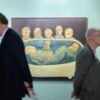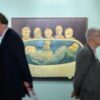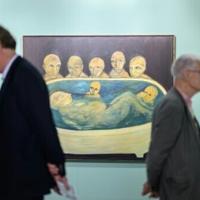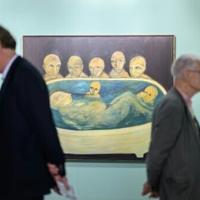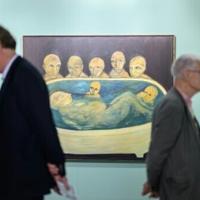Table of Contents
Market Overview
According to Market.us, The generative AI in the art market is poised for remarkable growth in the coming decade. By 2033, the market value is projected to reach approximately USD 8,628.5 million, marking a significant surge from USD 298.3 million in 2023. This robust expansion reflects an estimated compound annual growth rate (CAGR) of 40% from 2024 to 2033. North America is at the forefront of this dynamic industry, holding a substantial 38% share of the market in 2023, which translates to revenue of around USD 125.2 million.
The market for generative AI in art has seen remarkable growth, driven by the rising use of AI by artists and an increased interest in AI art within the entertainment and media sectors. The proliferation of AI tools has led to a surge in creativity and innovation, enabling artists to push the boundaries of traditional art forms and experiment with new styles and techniques. As a result, the market has expanded rapidly, with substantial investments flowing into AI research and development aimed at further enhancing the capabilities of generative AI technologies.
Demand within the generative AI art market is robust, driven by the needs of advertising and marketing segments that leverage these technologies to create captivating and engaging content tailored to specific audiences. Additionally, the fine arts and entertainment industries are utilizing AI to innovate and enhance visual and auditory experiences, reflecting a strong market appetite for technologically augmented creative services.
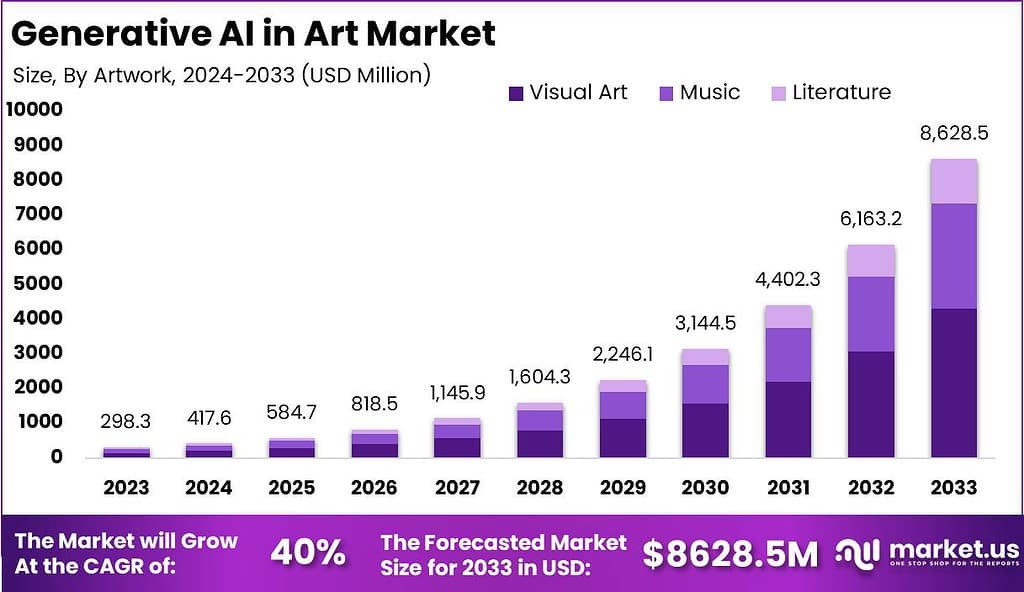

The primary catalyst for the market’s growth is the escalating adoption of AI technologies, which offer significant power enhancements and data processing capabilities that are critical for complex artistic creation. This adoption is supported by substantial investments and a growing interest in exploring the potential of AI within the creative sectors. Companies and individual creators are increasingly utilizing AI to experiment with and develop new artistic expressions, leading to a vibrant and evolving art landscape.
Key Takeaways
- The Generative AI in Art Market is experiencing remarkable growth, projected to surge from USD 298.3 million in 2023 to USD 8,628.5 million by 2033. This marks an impressive compound annual growth rate (CAGR) of 40% during the forecast period.
- In 2023, North America was at the forefront of this expansion, contributing 38% of the global revenue, which translates to USD 125.2 million. This leading position is largely due to the high adoption rates and continuous technological advancements within the region.
- The Visual Art sector proved to be the most prominent, capturing over 50% of the market share. This sector’s growth is fueled by the increasing integration of generative AI in creating digital paintings, illustrations, and various other visual art forms.
- Cloud-based Services also saw significant traction, holding more than 60% of the market share. This preference highlights the shift towards scalable and easily accessible cloud platforms for AI-powered art creation.
- In terms of applications, the Advertising and Marketing segment took a substantial slice of the market, accounting for over 35%. This segment benefits from generative AI’s capabilities in crafting captivating and innovative content for branding and promotional campaigns.
- Lastly, the Creative Professionals segment, which includes artists, designers, and digital creators, dominated the market, holding more than 40% of the share.
Analysts’ Viewpoint
Investment Opportunities & Risks
The Generative AI in the art market presents compelling investment opportunities, particularly in technology segments like cloud-based services and AI-enabled hardware. Cloud-based platforms dominate due to their scalability and accessibility, enabling widespread adoption among artists without the need for heavy initial investments.
Despite these opportunities, the market also faces inherent risks, such as ethical concerns surrounding AI-generated content and potential regulatory challenges that could impact the pace and nature of AI integration in the art sector. The technology’s rapid evolution may outpace current legal frameworks, posing risks in terms of compliance and intellectual property rights
Consumer Insights
Consumer response to AI-generated art is generally positive, with a significant portion of the audience expressing appreciation for the innovative forms of expression it enables. However, there remains a cautious approach among traditional sectors of the art market, where the integration of AI is seen as a tool to enhance, rather than replace, human creativity. The market’s growth is notably driven by creative professionals who are early adopters, utilizing AI to enhance productivity and creativity
Technological Impact and Regulatory Environment
Technologically, generative AI is transforming the art industry by facilitating the creation of complex, customized artworks at scale. It is increasingly used in diverse fields such as advertising, marketing, and personal consumer products, driving demand for AI capabilities that can deliver unique and engaging content efficiently. On the regulatory front, there is a growing need for frameworks that address the ethical use of AI, ensuring that innovations in AI are developed and implemented responsibly. As AI continues to permeate various aspects of art creation and distribution, stakeholders must navigate these regulations carefully to harness AI’s full potential while mitigating associated risks.
Regional Analysis
North America’s leading position in the generative AI in art market, with a commanding 38% market share amounting to USD 125.2 million in revenue in 2023, can be attributed to several key factors that reflect the region’s innovative ecosystem and robust economic policies. Firstly, the presence of major technology companies, particularly in the United States and Canada, plays a significant role.
These countries are home to pioneering firms in AI development, including Google, Microsoft, and OpenAI, which have invested heavily in the research and application of generative AI technologies. This concentration of tech giants not only drives advancements in AI but also facilitates the integration of these technologies into the artistic domain, providing tools and platforms for artists and creators to explore new forms of digital art.
Secondly, North America benefits from substantial investments in research and development from both the public and private sectors. The U.S. government, for instance, has prioritized AI as a critical area for technological leadership, funneling funds into innovation and the establishment of regulations that foster a safe yet progressive environment for AI technologies. This supportive regulatory framework attracts startups and established companies to develop AI applications without undue hindrance.
Furthermore, the region’s educational institutions contribute significantly to its dominance. Universities such as MIT, Stanford, and Carnegie Mellon are at the forefront of AI research, producing a steady stream of skilled professionals and groundbreaking studies that feed into the commercial sector. This academic prowess underpins the innovative applications of AI in various fields, including art, where generative AI is used to create novel artworks that challenge traditional methodologies and perceptions of art.
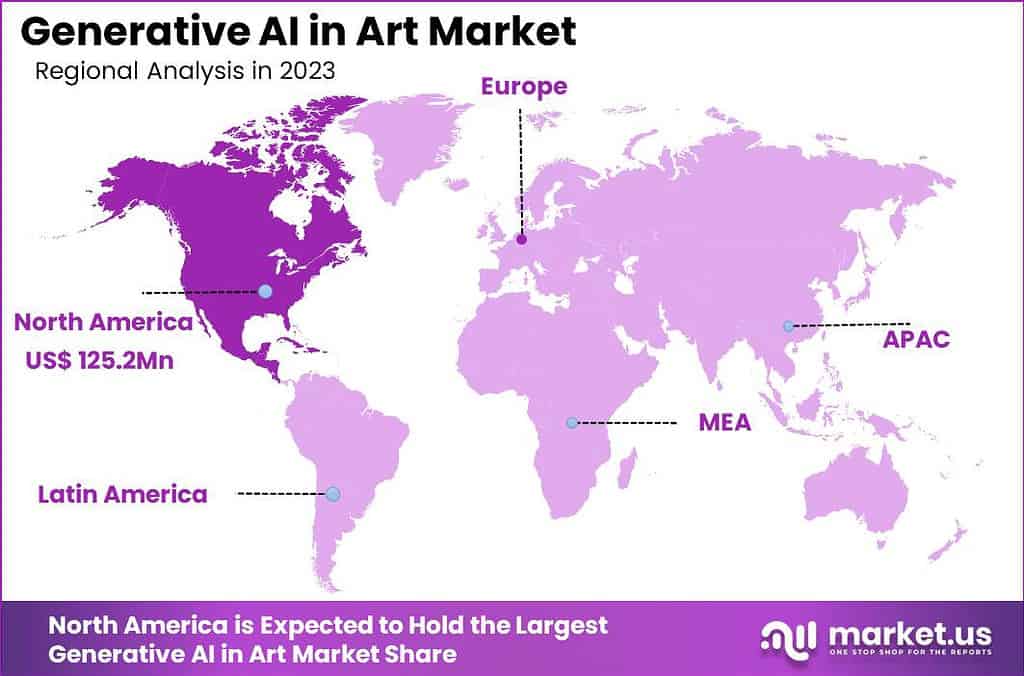



Top 5 Generative AI Trends in Art
- AI-Powered Creativity Expansion: Initially popular for generating realistic art and images, generative AI is now branching into other creative domains like music, writing, and fashion design. In 2025, AI models will increasingly influence these fields, offering tools that enable artists to explore new creative territories such as composing music aligned with specific emotional themes or testing fashion styles before actual production.
- Enhanced Personalized Experiences: Generative AI is set to revolutionize how personalized content is delivered, from marketing campaigns to interactive customer experiences. This trend focuses on tailoring products, ads, and interactions to individual preferences, significantly boosting engagement and customer loyalty.
- Innovations in AI-Generated Art and Design: The fields of digital art and design will witness a transformation, with AI-driven platforms enabling the creation of complex artworks and designs swiftly. These tools will allow for significant reductions in the time and cost associated with creative processes, pushing the boundaries of what can be achieved in graphic design, advertising, and even UI/UX design.
- Ethical and Transparent AI Practices: As generative AI tools become more embedded in various sectors, there is a growing emphasis on addressing ethical considerations, such as bias and transparency. Efforts are underway to develop AI systems that are not only efficient but also fair and clear about how they operate, ensuring they provide unbiased outcomes and maintain user trust.
- Impact on Content Creation and Delivery: Generative AI is reshaping content creation across industries, making it faster and more cost-effective to produce tailored content. However, this comes with the challenge of maintaining quality and originality. Forward-thinking companies are investing in AI systems that not only expedite content production but also enhance its relevance and appeal to diverse audiences.
Conclusion
The burgeoning field of generative AI in art is poised for significant growth, driven by technological advancements and increasing market demand across various industries. As AI technologies become more sophisticated and integrated with cloud-based services and virtual reality, they offer unprecedented opportunities for creative expression and innovation in the art world.
The expanding applications of generative AI not only enhance artistic creation but also revolutionize marketing, entertainment, and design, providing substantial business benefits and reshaping traditional creative workflows. With a projected market growth that underscores its rising importance and potential, generative AI in art stands as a transformative force, setting the stage for a new era of digital creativity and interaction.
Discuss your needs with our analyst
Please share your requirements with more details so our analyst can check if they can solve your problem(s)




This post was originally published on this site be sure to check out more of their content

